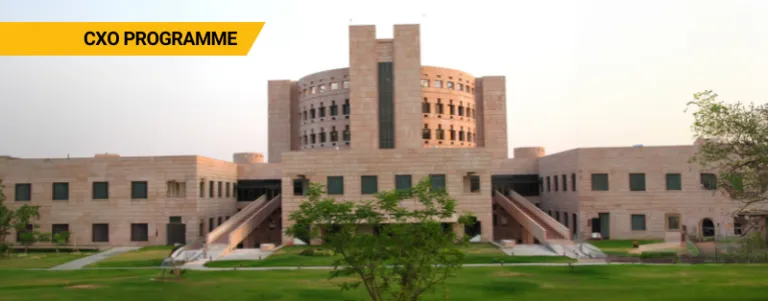8 Types of Leadership Styles and How to Choose Yours

Leadership style is the reflection of the leader’s behavioural pattern that enables them to manage their employees by directing and motivating them towards a common vision. Leadership styles also determine a leader’s approach to strategise and implement methods while fulfilling the business expectations and focusing on the team’s growth.
A leader often owns multiple leadership styles to tackle different business situations. In this article, we will discuss in-depth about leadership styles.
You’ll also learn about-
- What is leadership?
- Meaning of leadership styles
- Unique characteristics of leadership styles
- How to determine your leadership style
What is Leadership?
Leadership is the art of motivating people to work and focus towards a planned objective. It also encourages them to take up responsibilities and grow personally and professionally.
In an organisation, leadership is a vital management function that ensures improved efficiency and achievement of business objectives. Effective leadership provides clarity of purpose and guides the organisation to its mission.
An effective leader is someone who:
- Inspires and motivates others
- Has a vision and directs the path to achieve it
- Ensures the development of their team members
What is a Leadership Style?
A leadership style is a way in which a leader accomplishes their team’s objective by motivating employees to work towards the common goal and focusing on their well-being. Understanding leadership style is imperative for a team to work together and also keep growing while embracing changes.
Here are some reasons why leadership style matters:
- Increases team engagement
- Improves team communication and collaboration
- Strengthens the effectiveness of the team
Different Types of Leadership
1. Democratic Leadership
A democratic leader makes decisions based on their team’s opinion and feedback. In simpler words, they get everyone involved in the decision-making process.
However, this type of leadership cannot be used in the long run because of drawbacks like losing the leader’s authority, debates, and miscommunication between team members. Here are some scenarios in which you can adopt a democratic leadership style:
- New project that requires constant brainstorming
- Solve complex business problems
- Tight-knit or small organisations like start-ups, etc.
Here are some features of this leadership style
- Transparent conversations
- Everyone’s opinion counts
- Values collaboration and teamwork
- Encourages discussions
2. Autocratic Leadership
This is precisely the opposite of democratic leadership. The opinions of team members are not considered while making any business decision. Instead, leaders expect others to adhere to their decisions, which is not sustainable in the long run.
3. Laissez-faire Leadership
Laissez-faire means “let them do”. This leadership style is the least intrusive and ensures that the decision-making authority lies with the team members.
This leadership style empowers team members and holds them accountable for their work. This motivates many team members to put their best foot forward, improving the organisation’s efficiency and productivity.
4. Strategic Leadership
Strategic leadership is when leaders use their skills and capabilities to help team members and organisation achieve their long-term goals. Strategic leaders strive to get the best out of people or situations.
Here are some unique traits of strategic leaders
• They are interested in the well-being of others
• They are open-minded
• They are self-aware
• They are good at interpersonal communication
5. Transformational Leadership
Transformational leaders inspire others to achieve the unexpected. They aim to transform and improve team members’ and organisations’ functions and capabilities by motivating and encouraging them.
6. Transactional Leadership
This type of leadership is task-oriented, which means team members who meet the leader’s expectations will be rewarded, and others will be punished. It is a prevalent leadership style based on the action-and-reward concept.
7. Coach-Style Leadership
This leadership style focuses on identifying and nurturing a team member’s strengths and weaknesses. A coaching leader develops strategies that emphasise team members’ success.
Though this is similar to strategic and democratic leadership styles, the focus here is more on the individual.
8. Bureaucratic Leadership
This kind of leadership style sticks to the rules. For example, they might listen to their team members’ opinions while deciding.
Here are some of the benefits of this type of leadership
• Lowers the risk of favouritism among team members
• Increases creativity for some employees
How to Choose the Leadership style for you?
Here are some ways in which you can choose the right leadership style for you:
- Outline your values, ethics, and challenges you face as a leader, etc., to learn about yourself. Because getting to know yourself is the first step towards becoming an effective leader.
- Observe leaders you respect to help you determine your leadership style. Watch them tackle complex business situations, client meetings, stakeholders, etc., to draw inspiration from them.
- Try different leadership styles before choosing one
- Find a mentor to help you hone your leadership style
- Ask peers for feedback
- Take a leadership style assessment that helps you determine your leadership style
Learn about Leadership Styles to Become a Leader
Understanding the types of leadership can add much value to the organisation and create a good impact on your team members.
Therefore, if you want to become a leader that makes a difference, pursue an advanced certificate course to equip advanced skills and knowledge. Additionally, these online courses help build a strong foundation for becoming an effective leader.
Emeritus India offers different leadership courses in collaboration with renowned institutes like IIM, IIT, and ISB. These programmes are designed for fresh graduates and experienced professionals.
FAQs
- What is the definition of leadership style?
A leadership style is the behaviour pattern displayed by a leader to work in a certain environment while focusing on the business’s growth and their team.
- Why is it important to know your leadership style?
Knowing your leadership style helps in making effective business decisions. Additionally, it provides a blueprint on how to devise effective strategies, tackle complex situations, and manage a team effectively.






